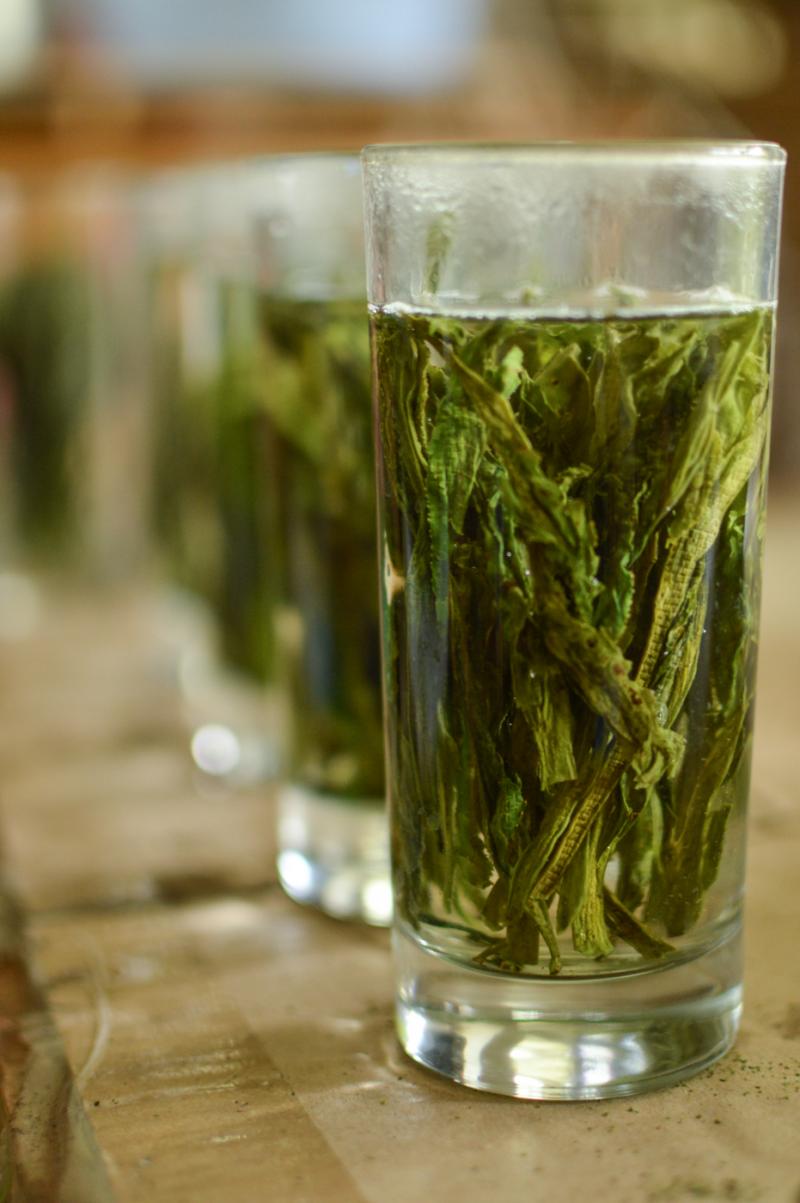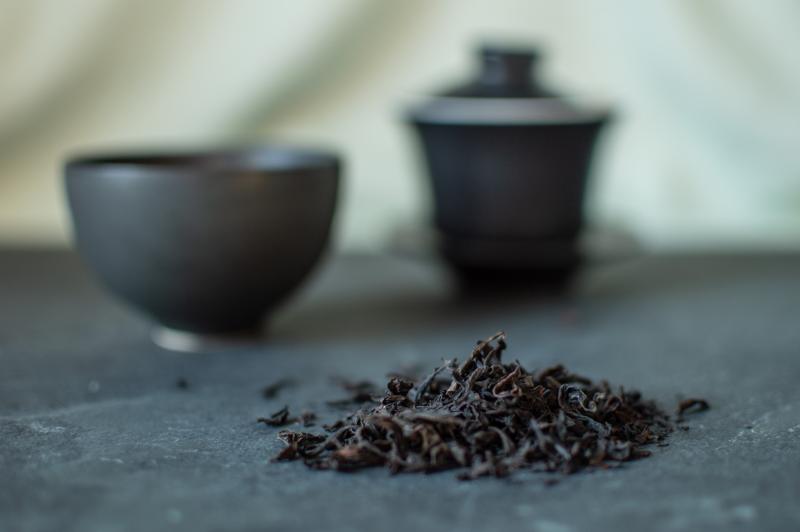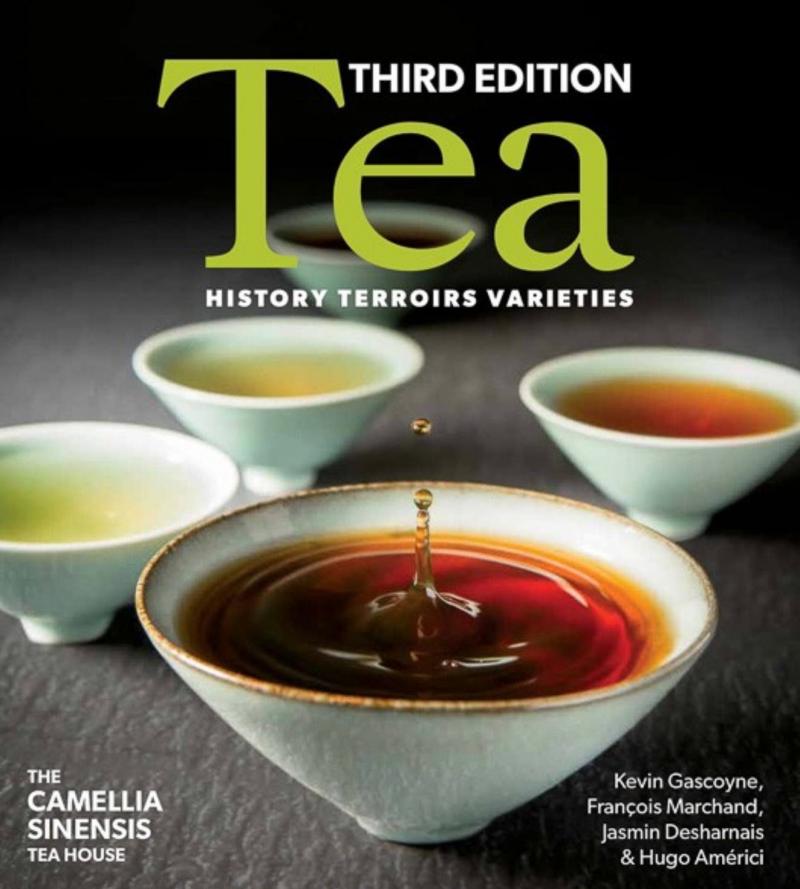Long ago, in the distant pre-pandemic days of 2019 (before our worlds were turned upside down), I was at the World Tea Conference + Expo in Las Vegas. During that event, my team from Camellia Sinensis set-up a very unusual tasting for a special evening session. About 40 people entered a mysterious, candle-lit room to participate in what one guest described as a “guided tea meditation.”
We served a flight of six teas, first and second infusion of each, prepared carefully in gongfu style. A tea-loving sound artist, Chris Olsen, had composed a rich, ambient soundtrack to accompany each moment during the 90-minute tasting.
As a tea merchant, so much of my time is spent recounting the in-depth back stories of the teas I sell. Over several decades of working as a taster, I began to have the feeling that when we taste tea, we tend to intellectualize it too much. We can get really busy rating these teas, repeating the backstory, evaluating the cultivar, searching out trademark flavor chemistry in the profile or simply discussing how expensive it was and how difficult it was to produce. But shouldn’t the really exciting part be the sensorial experience? These leaves represent moments of near perfection, combining the sequence of growth in the garden and choices made by the garden management and artisans to bring about this magical experience.
A “Below the Brows” Approach
So the central concept of this late-night session in 2019 in Las Vegas was to remove the intellectual disturbance of the all too regular “information driven” tasting, and to take a deep dive into the visceral and explore the unwritten essence behind the scenes that makes these teas so special. We had created an immersive space that led our guests to explore these fantastic leaves in a different way, without the white noise of pre-conception and comparison. It was a “below the brows” approach.
Rare in itself is not necessarily a sign of quality. You could make 200g of really bad tea that you could argue was rare, but as a team of buyers with quite a few decades of annual buying in the field between us, we have gained access to some very fancy batches. We carefully lined up a series of experiential moments. And that night, we brewed almost $1,000 of leaf with teas ranging in price from $1,000/kg to $1,1400/kg, and a couple that were exclusive to the event. But, as I mentioned, that really wasn’t the focus. In fact, it would only have been a distraction.
The story we were hoping to send people home with was deeper relationship and understanding of these leafy treasures (of course, to be fair, shortly after the tasting concluded, the participants were emailed a description of each tea, including the harvest details, the name of the artisan who crafted the tea, pricing, and instructions on how the tea was prepared).
With the spring teas of 2021 starting to arrive, what better time to find a moment of focus with some fancy leaf in its prime state of explosive freshness? Below are a few teas that I’ll be personally spending a special moment with while taking special care to put aside all I know or expect from them, in an effort to “know” the tea despite all I know about it.
Six Rare Teas to Explore:
1. MENG DING HUANG YA
This yellow tea – composed almost entirely of buds – comes from the Sichuan province. Its magnificent young shoots are selected before being covered with the fine hairs typical of that grade of imperial picking. Its light yellow liquor is sweet and tasty. Bold hazelnut aromas are complemented by hints of vanilla and herbs. The finish is supported by its creamy texture and sweet taste. In the tradition of great teas, this one should, preferably, be enjoyed in a Gaiwan with a carefully curated ambiance.
2. TAI PING HOU KUI HOU KENG
It takes a one-hour journey by boat to travel to the luxuriant gardens that produce this tea with long serrated and flattened leaves, reflecting its artisanal rolling between two wire meshes. Its light yellow liquor is full and oily, combining a deep mouthfeel with savory notes of vegetables (grilled zucchini), melon and orchid. A force of nature, this tea – discreet and powerful – is a drink for any occasion.

3. YIBANG MAN GONG 2019 OLD TREE
This is a young pu-erh with surprising fruity, floral and camphor aromas. It’s produced from century old trees in Mr. Mei's garden, and this lot will remind some of Chinese green tea, but also reveal an exceptional aromatic intensity and length. Its generous texture – full of honey, flowers and wild herbs – is fully appreciated on multiple infusions.
4. ROU GUI MA TOU
The Ma Tou (“horse head”) section in Wuyi National Park is known to produce some of the best Rou Gui in the World. This type of wulong – harvested near the strange rock formation – is amongst the most sought after in China.
This high grade wulong gives a remarkably clean and complex brew, with a true impression of depth. Aromas of caramelized sugar, spices (cinnamon) and a hint of flowers can only barely suggest the warm sensations experienced in tasting.

5. XIA GUAN 1986
Shaped in tuo cha (bird nest) of 250g by the Xiaguan tea factory, this 30-year old pu-erh is to be tasted with attention and care. A generous rinse allows aromas of damp undergrowth and roots (beetroot) to prepare the infusion of a clear mineral liquor, deeply marked by notes of lichen and black earth. The sharp and slightly metallic attack slowly evolves towards a sweet finish with fine accents of berries, spices (anise) and camphor. A rare tea, deep and long lasting in taste, it’s enhanced by its subtle soothing effects on the body and mind.
6. DARJEELING FIRST FLUSH SAMABEONG DJ-1
Samabeong in Darjeeling is a remote garden east of Kalimpong town near the Bhutanese border. This isolated terroir gives the tea a unique flavor of its own. Originally planted by the Scots in 1882, its current tea maker amazes us with the quality of these clonal leaves, with such high bud content. Floral and zesty flavors, enhanced by the fruity sweetness of muscatel notes, give the infusion an exceptional balance between its suppleness and attack.
Kevin Gascoyne, a frequent speaker at the World Tea Conference + Expo, is one of the founders and creators of Tea Studio in India, and he’s also the owner of Camellia Sinensis Tea Houses and Tea Schools of Montréal and Québec City. To learn more, visit TeaStudio.info or Camellia-Sinensis.com.

Tea History, Terroirs and Varieties is Camellia Sinensis' prize-winning book. It was first published in English in 2010 and won various awards, including Best Tea Book 2014 for the Second Edition by the World Tea Awards. It was then nominated again for the Third Edition. Originally published in French, it is widely used as a training manual by many tea companies, and it's now translated into Korean for a tea sommelier program, as well as Russian and Italian. To learn more or to order, click here.
